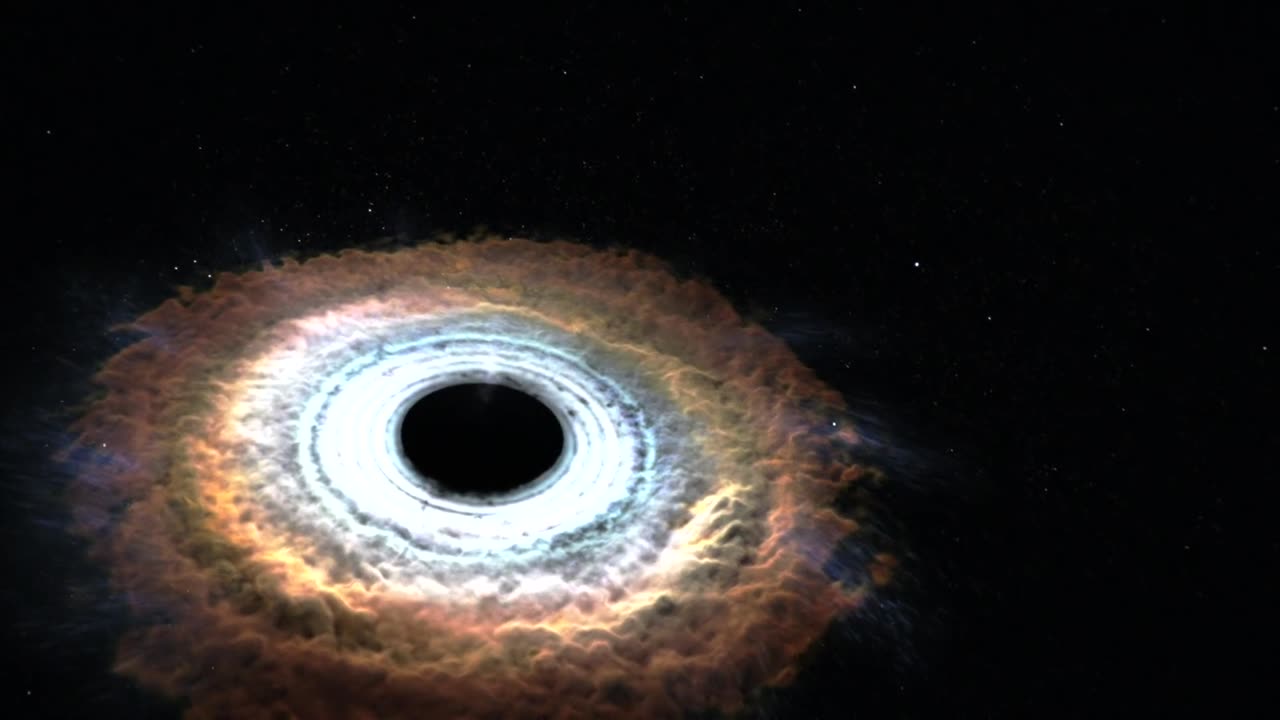Premium Only Content

black hole massive shreds passing stars
This artist's rendering illustrates new findings about a star
shredded by a black hole. When a star wanders too close
to a black hole, intense tidal forces rip the star apart. In
these events, called "tidal disruptions" some of the stellar
debris is flung outward at high speed while the rest falls
toward the black hole. This causes a distinct X-ray flare
that can last for a few years. NASA's Chandra X-ray
Observatory, Swift Gamma-ray Burst Explorer, and ESA/
NASA's XMM-Newton collected different pieces of this
astronomical puzzle in a tidal disruption event called
ASASSN-14li, which was found in an optical search by the
All-Sky Automated Survey for Supernovae (ASAS-SN) in
November 2014. The event occurred near a supermassive
black hole estimated to weigh a few million times the
mass of the sun in the center of PGC 043234, a galaxy
that lies about 290 million light-years away. Astronomers
hope to find more events like ASASSN-14li to test
theoretical models about how black holes affect their
enviionments.
During the tidal disruption event, filaments containing
much of the star's mass fall toward the black hole.
Eventually these gaseous filaments merge into a smooth,
hot disk glowing brightly in X-rays. As the disk forms, its
central region heats up tremendously, which drives a flow
of material, called a wind, away from the disk.
-
 LIVE
LIVE
In The Litter Box w/ Jewels & Catturd
22 hours ago1 TRILLION! | In the Litter Box w/ Jewels & Catturd – Ep. 733 – 2/3/2025
8,060 watching -
 1:38:44
1:38:44
The Quartering
2 hours agoTrump's Tariffs Already Work, Blackhawk Pilot Coverup, DNC Makes Insane David Hogg Appointment
43K23 -
 LIVE
LIVE
Dr Disrespect
4 hours ago🔴LIVE - DR DISRESPECT - TARKOV - ZERO TO HERO RAIDS ONLY
4,232 watching -
 1:13:51
1:13:51
Candace Show Podcast
2 hours agoEXCLUSIVE! Did Ryan Reynolds Extort Hollywood Execs? | Candace Ep 143
45K40 -
 LIVE
LIVE
Darkhorse Podcast
3 hours agoThe 263rd Evolutionary Lens with Bret Weinstein and Heather Heying
929 watching -
 9:37
9:37
Silver Dragons
2 hours agoGoodbye Cheap Silver - How the Tariffs Will Change Stacking Forever
2.21K -
 37:33
37:33
CryptoWendyO
2 hours ago $0.47 earnedWORST DAY IN CRYPTO HISTORY $10 Billion in Liquidations!
5.65K4 -
 57:01
57:01
PMG
2 hours agoHannah Faulkner and Dr. Bryan Ardis | Don't Fall For the Bird Flu!!!
5.99K -
 1:18:00
1:18:00
Russell Brand
1 day agoUFOs, Whistleblowers, and Government Lies – The Truth with Jeremy Corbell – SF530
174K58 -
 1:57:47
1:57:47
The Charlie Kirk Show
3 hours agoThe Most Beautiful Word in English + Confirm Tulsi! | Navarro, McCain, Posobiec | 2.3.2025
169K42